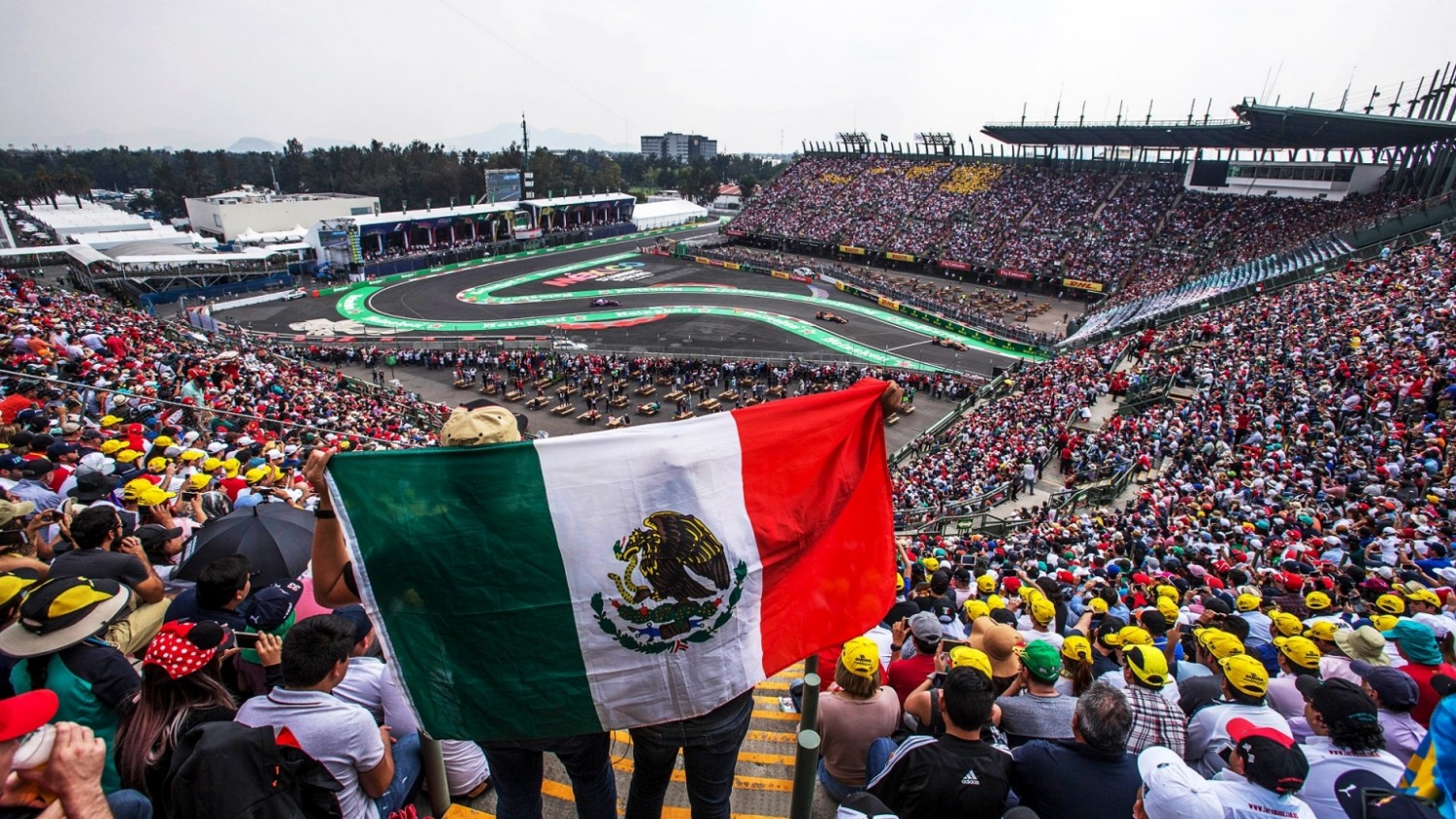F1: 2023 Mexico City GP Preview
After the USGP in Austin, Texas last weekend, the F1 teams headed south from the United States to Mexico for the Mexico City Grand Prix.
The Autodromo Hermanos Rodriguez, named after Mexico’s famous racing brothers Pedro and Ricardo, is located in the eastern suburbs of Mexico City’s sprawling metropolis.
It is one of the most vibrant events on Formula 1’s calendar, with a frenzied crowd occupying the Foro Sol stadium – through which the circuit passes – most notable when home hero Sergio ‘Checo’ Perez drives through. Mexico City is a colorful and captivating event, enhanced by the history and culture present in the capital, and heightened further by the Dia de los Muertos, the world-famous festival which typically coincides with the grand prix’s date.
The Autodromo Hermanos Rodriguez may appear a relatively straightforward circuit on paper, but there is an atypical element to the event. At 2,200 meters above sea level, Mexico City is comfortably the highest venue visited by Formula 1, a full 1,500 meters higher than the second-highest circuit, Interlagos. That altitude has an impact on a car’s operations. The thinner air means cars generate less downforce, which can cause more sliding through the medium-speed Esses that make up the middle portion of the lap, accentuating tire wear.
Straight-line speed is usually the highest all season, despite running bigger rear wings than several venues, because of the lower drag levels. This can make overtaking a challenge, with the effect of the DRS lessened, while brake and power unit temperatures in dirty air regularly need to be monitored.
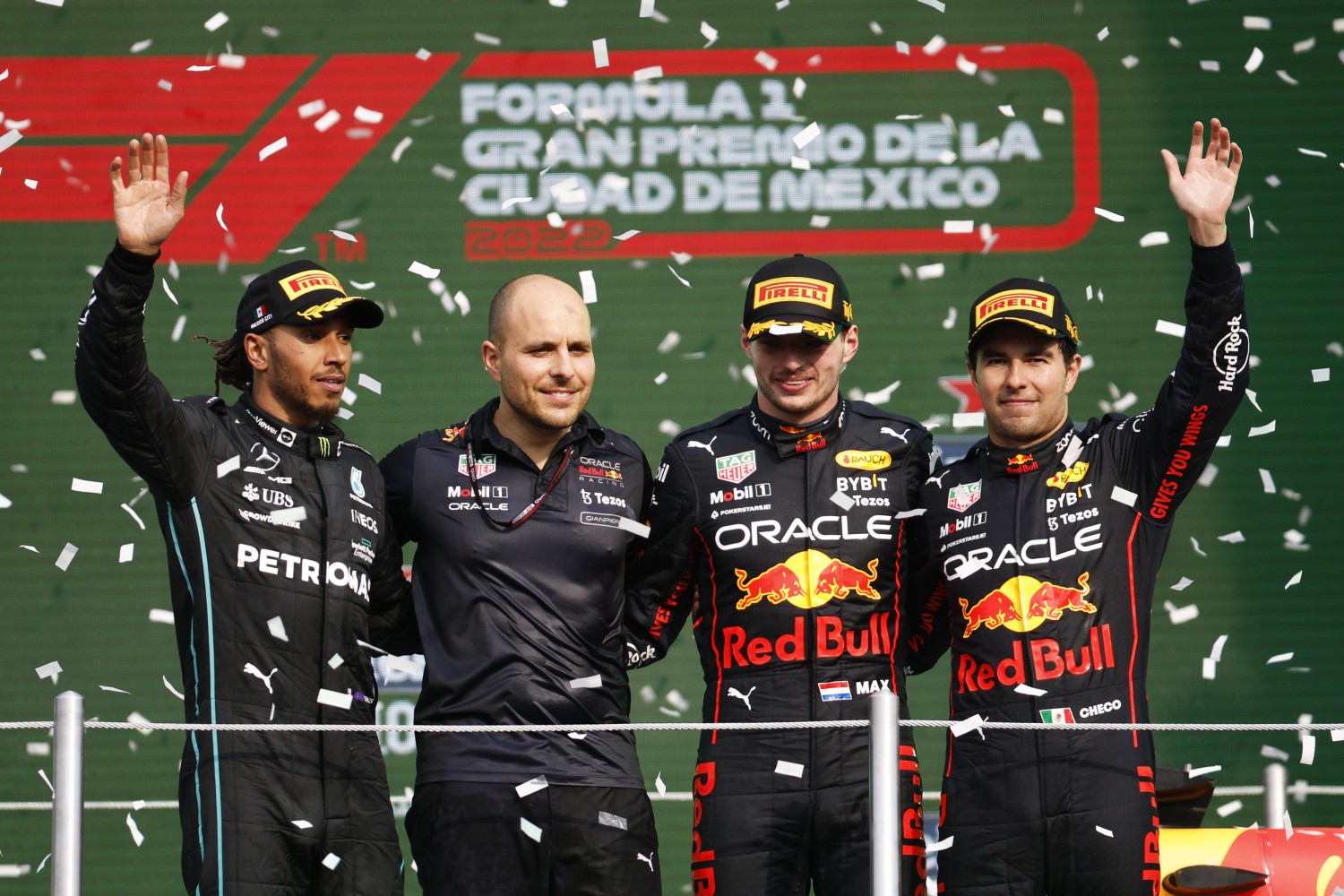
What to look for
- Race interruptions: There’s little margin for error at Autódromo Hermanos Rodríguez, which means race interruptions are frequent: in the past five races there has been one Safety Car and six Virtual Safety Cars. Last year, there were two DNFs in the race – with the lower air density making engine cooling more difficult.
- Overtaking: Despite having a long straight and three DRS zones, overtaking is more difficult than at many other circuits; Mexico City’s high altitude means lower air density, which reduces the slipstream and DRS effect.Strategy: Pirelli have allocated C3, C4 and C5 tires for this year’s race – one step softer than in 2022 – which could change the optimal strategy for what has historically been a one-stop race. A new version of the C4 will be tested by all teams during free practice in preparation for 2024.
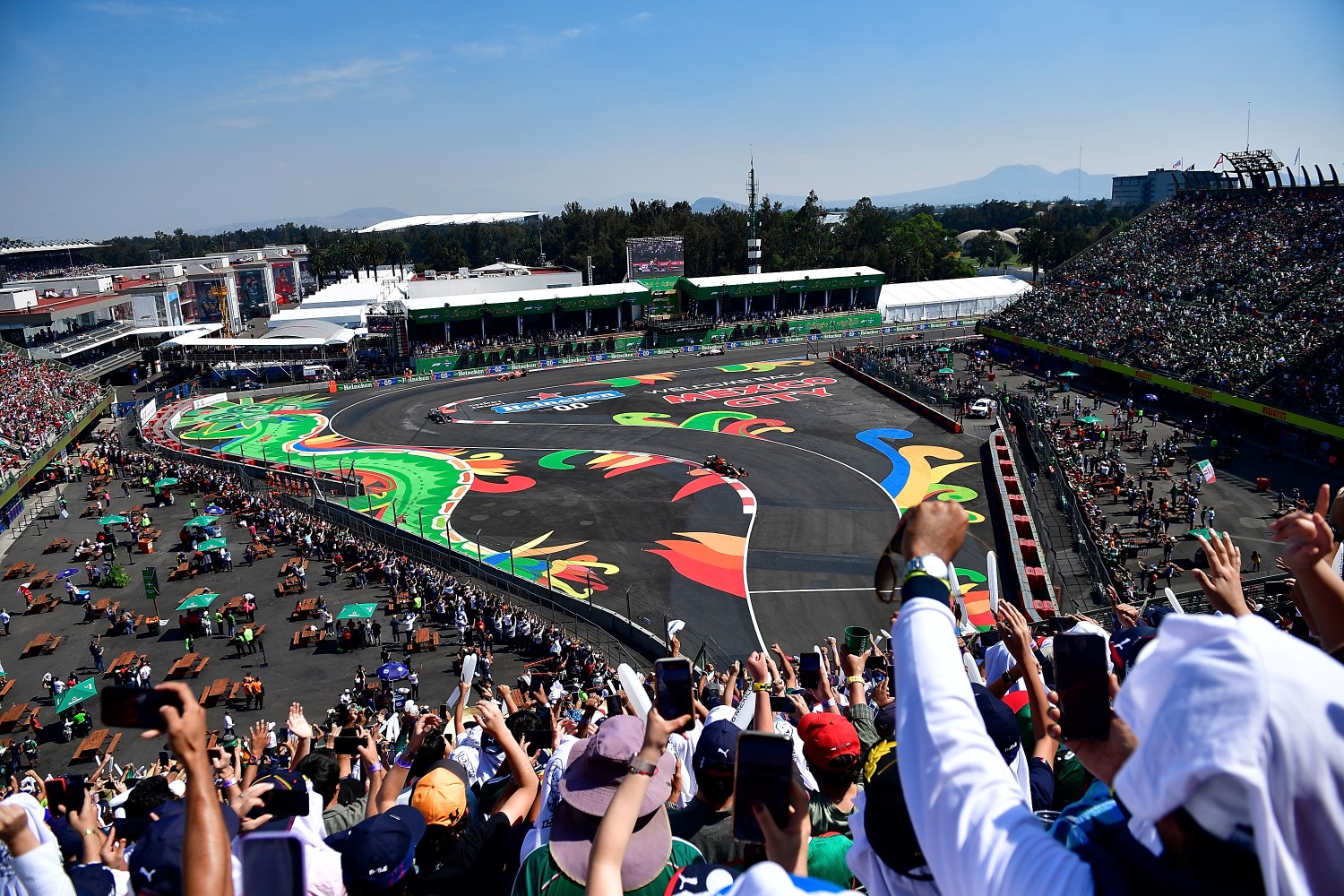
It’s a challenge – both physically and technically with the car – cooling is an issue. You don’t have as much downforce, you run a lot of wing on the car, and it’s very low density in the air, so you actually have about the same amount of downforce as you have in Monza. That’s why we’ve seen some of the highest top speeds from Formula 1 cars there. It’s tough physically and in the past, drivers have had Altitude Sickness from being so high up.
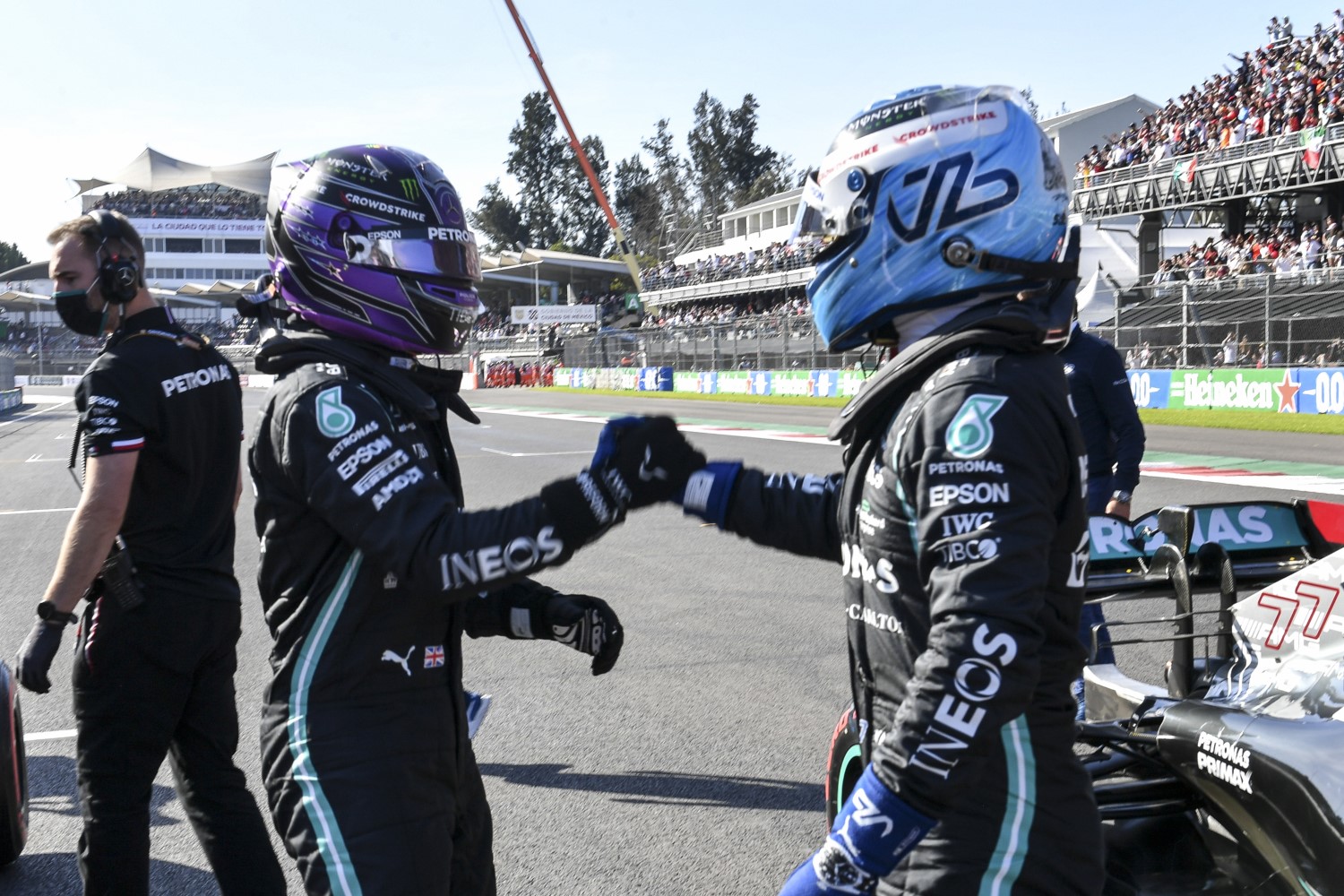
Fact File: Mexico City Grand Prix
- The Autódromo Hermanos Rodríguez is the third-shortest circuit on the 2023 F1 calendar, behind only Zandvoort and Monaco.
- It does, however, have the longest run from pole position to the first braking zone at 811 meters.
- Mexico City sits at over 2,200 meters altitude, which affects the car in a number of different ways.
- Because of that high altitude and therefore low air density, the air is incredibly thin.
- The ambient pressure is by far the lowest of the season at 782mb.
- The oxygen levels are therefore 78% of what they are at sea level. This has a big impact on the aerodynamics and the Power Unit.
- The Power Unit sees a decent drop in output due to the thin air. The turbocharger makes up for some of the power loss, but not all of it, and has to work much harder than it does in normal conditions.
- Due to the altitude, we run a high downforce package in Mexico City but experience Monza levels of downforce.
- Top speeds are therefore some of the highest of the season and typically exceed 350 km/h.
- The Autódromo Hermanos Rodríguez still largely follows the original outline of the circuit which was first developed in 1959.
- The main difference is the former, more fearsome version of the Peraltada corner is now bisected.
- The first championship Grand Prix race took place at the circuit in 1963, before disappearing from the calendar after 1970.
- The second F1 stint at the circuit came between 1989 and 1992, before the championship returned in 2015 with Nico Rosberg victorious for our team.
Unlocking the lap
Turn One may appear no different to many similar corners on the calendar, but it is a challenge. The approach-speed is one of the highest on the calendar, which makes finding a braking point tricky, and the lack of downforce due to the altitude only adds to that. Additionally, the exit needs to be compromised heavily for the chicane that immediately follows.

The Esses – Turns Seven through to 11 – is where the cars will usually rely the most on the downforce. With aero grip drastically reduced – despite teams running very high levels of wing – it makes this sequence of fast bends all the trickier. Turn 10 in particular is tough and it is easy to lose stability through this corner.
Concluding the lap are Turns 16 and 17. The sharper of the two right-handers – named after Nigel Mansell – is crucial to the lap, while also setting up the next one for the very long pit straight that follows. The last corner, while still called Peraltada, is a shadow of its former self but requires a tricky balancing act on the throttle to maximize acceleration on to the main straight.
Into thin air
It’s not something you immediately feel. Altitude sneaks up on you, quietly, invisibly, just like the oxygen that your body craves, and of which it is, partially, deprived. You can go around your day, not feeling a difference, but the change is there: working its way into your lungs, forcing your heart to work a little bit harder. Go for a run, a gym session or a game of tennis, and that’s where it hits you: your body doesn’t respond how it used to, it wants more energy, more fuel, more air.
Ever since sports became science, the effects of high altitude have been studied, analyzed, exploited for performance. From the sprinting world records at the 1968 Summer Olympics to the effect on endurance for those training in the highlands of Kenya (or, for those more inclined to local pursuits, St. Moritz), exercise and competition at altitudes have forged an indissoluble bond with sport.
The rarefied atmosphere affects in particular ways anything that sucks in air, uses it as part of the engine power development, and eventually moves through it as quickly as it possibly can – effectively, anything that a Formula One car does. Just like any athlete, cars struggle a bit more at higher altitudes: cooling is reduced; power output stunted; and downforce much reduced as there’s not as much of the stuff pushing down on the bodywork.
Each of these elements contributes to creating a bigger challenge for engineers, crews and drivers: setups are adapted, with downforce levels not seen since Monaco on a track that very much resembles Monza; mechanics work hard in hypoxic conditions; and drivers, well, have to stop the car with much less downforce that they’d like to have.
There are many striking elements to the Mexican Grand Prix: a week-long celebration of the country, a party atmosphere from day one to well after the checkered flag, thanks to amazing fans and an attentive race promoter, one of the best podiums in the calendar – but the most crucial of all, just like the rarefied air, is one you can’t touch or see. As the championship enters crunch time, with just five races to go, we will all need to adapt to what our hearts do at altitude: work harder and push for our targets.
Weekend Weather
Tropical Storm Otis lands near Acapulco, Mexico, on Wednesday, but it looks like it might not impact this weekend’s race in Mexico City. Friday is set to be dry and sunny at first with an increasing chance of showers in the afternoon with a maximum temperature of 25 degrees Celsius.
Saturday is set to be sunny at first with a slight chance of a small, short shower at the end of the day – but the risk of rain for Qualifying is low. Temperatures are set to peak at 26 degrees Celsius on Saturday.
On Sunday, the weather is set to be similar with highs of 26 degrees Celsius and another slight chance of showers in the afternoon. This could have a pivotal impact on the race.
Pirelli Tires – Mario Isola – Motorsport Director
“The second stop on Formula 1’s American tour takes place in Mexico City on the circuit named after Pedro and Ricardo Rodriguez: the brothers who were local motorsport heroes throughout the 1960s and 1970s. The track, located on the west side of the city, is just over four kilometers long with 17 corners and it sits at more than 2000 meters of altitude. This has an important effect on car performance, with the rarefied air reducing drag and also downforce. As a result, the aero settings on the cars are similar to those used on high-downforce circuits – only with a much reduced effect on the tires. The grip from the asphalt is also much less than average, as surface roughness is among the lowest of the entire calendar.
This year we have decided to bring the three softest compounds to Mexico – C3, C4 and C5 – after careful reflection based on last year’s information, as well as the simulations that the teams have as always supplied to us. This should lead to a wider variety of strategy choices throughout the race, opening the door to a two-stop strategy as well. Last year, when the chosen compounds were C2, C3, and C4, nearly all the drivers stopped only once, mainly using soft and medium.
Mexico also gives us the chance to try out a new variant of the C4 with all the teams. During the two hours of free practice on Friday each driver will have two sets of these new prototypes to use as they wish. Once we have analyzed all the data, we will then decide whether or not to homologate this version for use in 2024.”
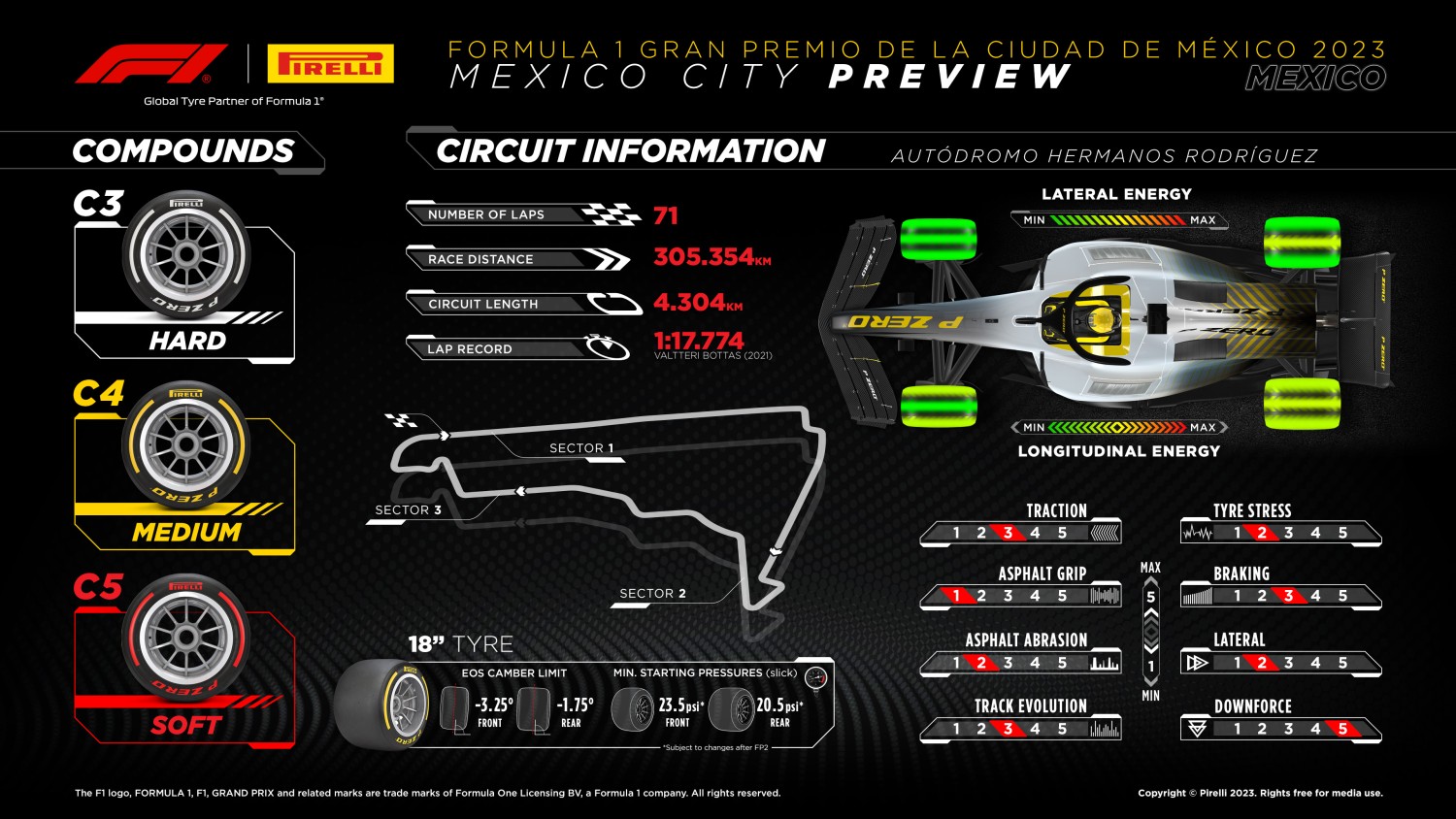
- In Mexico the teams will have C3 as P Zero White hard, C4 as P Zero Yellow medium and C5 as P Zero Red soft: one step softer compared to 2022.
- Graining is often seen at this track, with the cars sliding more due to the reduced aerodynamic effect and high altitude.
- Max Verstappen is the most successful driver in Mexico City, with four wins from seven participations. This also means that Red Bull has more victories than any other team in Mexico.
- A one-stopper was the most popular strategy last year. Max Verstappen started on a used set of softs and then finished the race on mediums, ahead of Lewis Hamilton who instead started on the medium tire and finished on the hard. There’s a big difference in temperature between the start and the end of each day: a factor to bear in mind when it comes to analyzing potential degradation rates.
Key Quotes
Max Verstappen
It’s great to be heading to Mexico, the Team has a great history there, winning and taking a double podium in the last two years. It is of course Checo’s home race so it will be a big one for us. The atmosphere is always amazing driving through Foro Sol. Mexico City is the highest altitude track of the season, which is more stressful on the cars, but the RB19 has been faultless in most conditions so I’m looking forward to seeing how we will perform. We’re also returning to the normal race format this weekend so that’ll be good, as we head into the second race of the triple header. Following Austin, we can expect the race to be more of a fight, but we’ll use our strategy to our strength. The aim is to keep on winning.
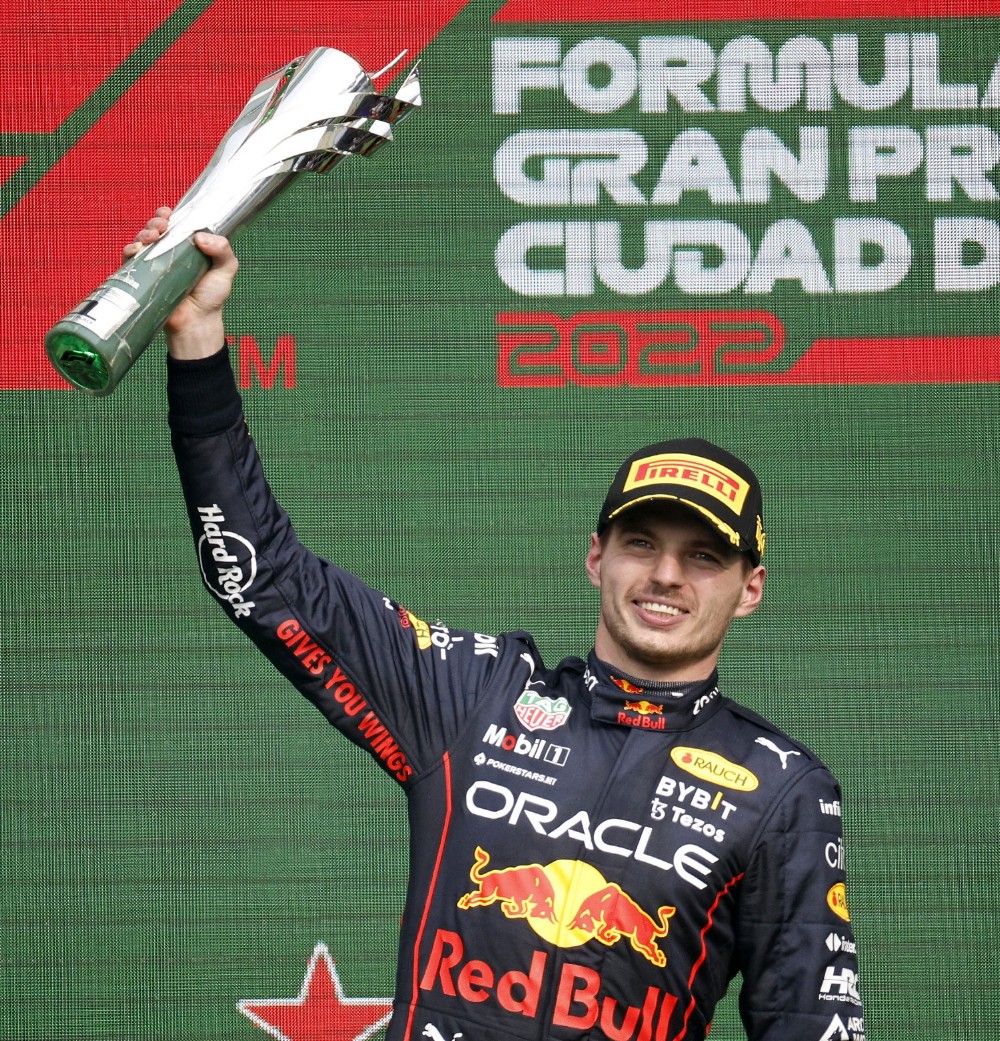
Local Hero Sergio Perez
Mexico is my most important weekend of the season and I can’t wait for my home race. The support in Austin this weekend was crazy, so I can’t even imagine what Mexico will be like, it’s going to be very special. We have made some very good steps with the car but didn’t get to fully show our progress due to taking some wrong directions with the set up this past weekend. I am optimistic for this week, we know what direction we have to take now so hopefully we get to show that. We have a few things to sort out with the car and we should come back stronger. I want Mexico to come out to support the whole Oracle Red Bull Racing Team, not just me.
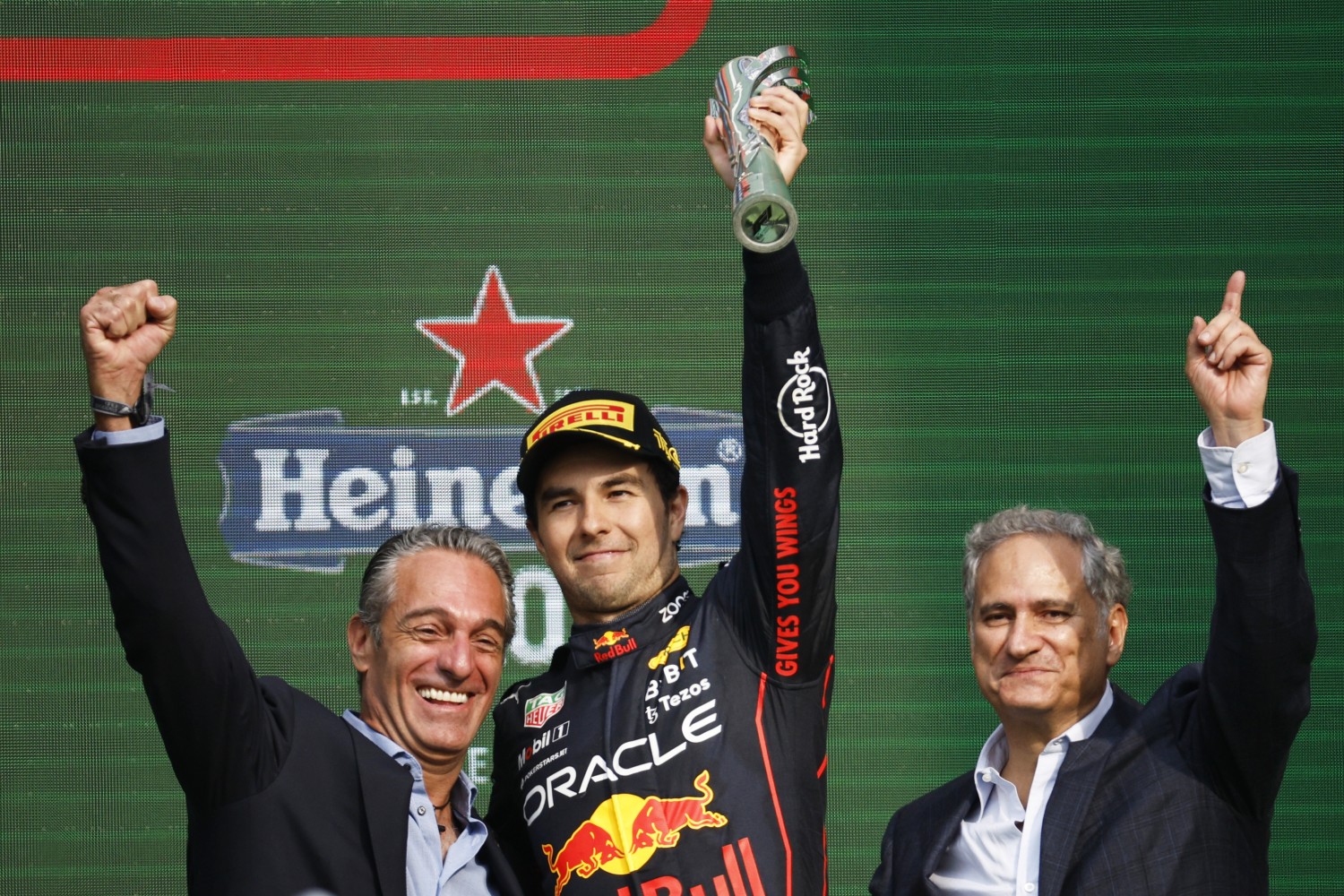
Will Verstappen gift the win to Perez?
Sergio Perez is locked in an intense fight for second-place in the drivers’ championship, with Lewis Hamilton with three rounds remaining.
While Red Bull have already secured the drivers’ and constructors’ crowns, they will still be wanting Perez to finish second behind Max Verstappen – something they never managed in the days of Sebastian Vettel and Mark Webber.
The F1 Mexico City Grand Prix is Perez’s home race, and a first-ever victory in front of his adoring fans would be something special to see.
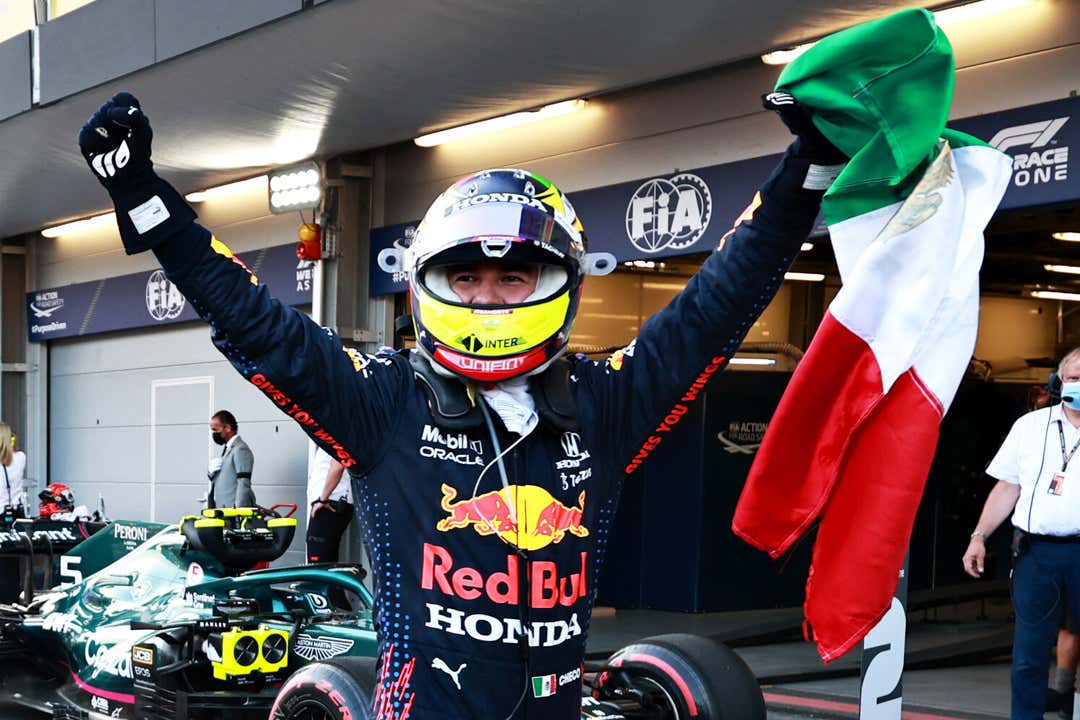
What is Downforce and Why is it So Important in F1?
Mexico is a unique venue for F1 with the high altitude impacting how the cars perform on the track, particularly related to the aerodynamics and downforce. Our latest preview feature talks through the importance of downforce in F1, featuring interviews with Mike Elliott (Technical Director), Claire Simpson (Aerodynamics Group Leader), Kathryn Richards (Wind Tunnel Technician) and George Russell (Driver of Car No.63).
Downforce is an integral ingredient to making a Formula One car go fast out on track, but why is this the case? How do we decide the correct amounts of downforce required and what external factors influence it? Keep reading to find out.
What is downforce?
Downforce is the vertical component of the aerodynamic forces acting on the car. As the car travels through the air, the downforce will push the car down into the ground. In terms of the aerodynamics of the car there are actually three forces: the downforce is the vertical force, the drag is longitudinal, and the side forces are lateral, with three moments operated around these axes.
Downforce is undoubtedly the most important in terms of car performance, as the more we can push the car down into the ground, the faster we go around the corners and the better the car handles. When downforce levels change, drivers can really feel it in the car. Reducing downforce causes the car to slide around more, the rear end is less stable, but you have less drag on the straights. With higher downforce, the car feels much more planted to the ground, but on the straights it can feel like you’ve got a parachute on the back of your car.
To give some perspective on how much downforce these modern F1 cars generate, it’s fairly similar now to the old regulations. At around 150 km/h, the car generates as much downforce as it weighs (the minimum weight of the car is 795kg). By the time you reach the end of the straight where the car is travelling at its maximum speed, it is probably three or four times the weight of the car.
You would assume the faster the corner, the more important downforce is, where the aerodynamic loads are the largest. But because the cars spend so much time in the low and medium speed, that’s where the biggest time loss around the circuit is, so therefore the downforce there is actually the most important. If you can push the car into the ground more through those fiddly, slower-speed sections, the better grip and traction you’ll get on corner entries and exits.
Which parts of the car generate downforce?
The majority of the downforce generated by the car comes from the floor, but there are also big contributions from the front and rear wings. Both of these elements of the car are also easier to adjust in terms of downforce level, because you can change the front wing angle or the depth and angle of the rear wing flap, to provide different downforce levels.
However, while those are the obvious aerodynamic elements, the entire car is generating downforce. Every surface and piece that the air touches are generating some form of downforce. The trick for the aerodynamicists is to get them all working in harmony to deliver maximum car performance.
How do we develop a downforce package?
The first step to developing an aerodynamic package is to start thinking about the flow structures, so what flow structures we want to make around the car to either improve performance or target performance to a specific track’s characteristics.
We would start by using Computational Fluid Dynamics (CFD) to try and achieve these flow structures, iterating a few geometries and see what has been successful. Then if we achieve the results we’re looking for in CFD, we’ll the decide what to take for a Wind Tunnel test.
On the track, the car moves through the air and goes around the track, but in the Wind Tunnel, this is flipped, so the car is stationary, and we move the road underneath the model and pull the wind over it. This simulates the same relative motion between the car, the road and the air as you see on the track. Given how limited track testing is in modern F1, the Wind Tunnel is a vital tool.
However due to F1’s aero restrictions, the amount of CFD and Wind Tunnel time given to each team depends on where they finish in the Championship. Finishing higher up the standings gets you less time for aero testing, compared to those lower down. It’s split into two sections, your position on the 1st January (we were Champions on this date in 2022, so had the least time of everyone) and the 1st July (we were third in the standings at this time, so therefore have more time than the top two).
Once a component has been successfully tested in the Wind Tunnel, it’ll then be down to the manufacturing areas of the team to make the part and deliver it to the track.
What external factors influence downforce?
One key external influence on the aerodynamic performance of the car is the weather, particularly the wind. Aero is very sensitive so changes in wind direction or speed can impact the way a car handles.
If you go into a corner with a headwind, you are approaching the corner slower but have more downforce as the wind is pushing the car more into the ground, so can corner faster. On the flip side, a tailwind will push you towards the corner faster, but have less downforce so the car will feel lighter as there is less wind pushing the car downwards.
Another important factor is the altitude, as this impacts the air density and the amount of air particles. In a location like Mexico, the altitude is very high, so there is a low air density, meaning fewer air particles to push the car down to the ground. So in Mexico you can run your maximum downforce wing used in Monaco or Budapest, but it’ll produce downforce levels similar to Monza, and the highest maximum speeds of the season.
The car will therefore perform slightly different in Mexico and the drivers will feel this in the cockpit. It’s also a challenge for car cooling because there is less air passing through the radiators and cooling vents, to lower the temperatures of key systems like the Power Unit and brakes. So extra cooling provisions are typically brought to Mexico.
